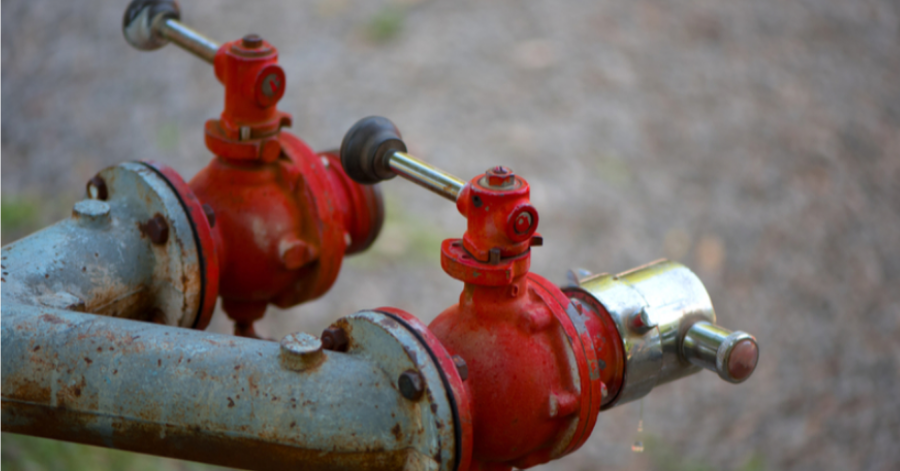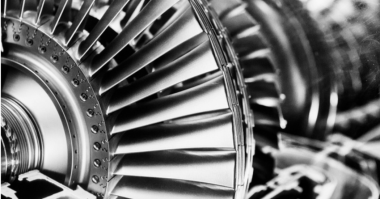An integral component of most fluid handling systems is industrial valves. To ensure they can handle the variety of application conditions they encounter, they must be engineered with meticulous attention to detail.
Butterfly valves, ball valves, and gate valves are just a few examples of valve types that many industries heavily rely on. The basic function of each of these valves is to turn flow through a pipe on and off. This requires mechanical actuation of some component within the valve (e.g. a ball, a diaphragm, or a disc).
There must be some means of lubrication within the valve where actuation occurs. Many valves can use traditional oil or grease lubricants or certain engineered plastics if the application permits. However, in severe service conditions where oil and grease lubrication is not feasible and engineered plastics will melt or deform, valve engineers often turn to carbon/graphite to solve their design challenges.
Carbon/graphite has virtually unparalleled performance in all types of boundary conditions. The physical properties of carbon/graphite illustrate why it performs so well in valve applications:
| MATERIAL PROPERTY | DESCRIPTION OF PHYSICAL PROPERTY |
| high oxidation resistance | carbon graphite is able to resist oxidation at elevated temperatures, especially in the oxygen-deficient environment that typically exists within valves |
| corrosion resistance | carbon graphite is chemically inert, allowing it to perform in even the most corrosive chemical environments |
| dimensional stability | the low coefficient of thermal expansion of carbon graphite allows it to remain dimensionally stable in a wide range of temperatures. it also will not melt or extrude out under pressure |
| dry running ability | carbon graphite’s self-lubricating properties and impressive wear resistance allow it to run well in dry, non-lubricated conditions |
| little to no maintenance needed | carbon graphite has no shelf life. combined with its excellent wear resistance, this means it can run for many years without issue |
| thermally conductive | carbon graphite’s high thermal conductivity minimizes the amount of frictional heat buildup at the rubbing interface |
| high compressive strength | when held in compression in a metal retainer, carbon graphite can dependably withstand heavy loads without excessive wear |
| food safe | a number of carbon graphite grades have been deemed Generally Recognized as Safe for use in food processing applications by the FDA |
Any “rubbing” component within a valve (e.g. valve seats and stem guide bushings) can be made of carbon/graphite. Major valve OEMs have made these types of components out of carbon/graphite in their most demanding and mission-critical applications and have had a long track record of success.
Example: Fire-Safe Valves
One such application is fire-safe ball valves. These valves must be able to actuate reliably in the presence of extreme heat without fail. After all, fire suppression systems rely on these valves to distribute water as necessary during a fire.
These types of valves are prevalent in the petrochemical industry due to the combustible nature of oil and gas. Oil refineries, tankers, and rigs are all outfitted with numerous fire-safe valves that must perform to standards set forth by the American Petroleum Institute (API). API 607 is one these standards – it outlines the fire safety testing that is required of soft-seated (i.e. nonmetal) quarter-turn valves. This standard involves ensuring that the valves can handle a certain amount of pressure when the valve is heated to ~1400-1800°F, closely simulating fire conditions.
Conditions like these are what make the use of highly engineered materials like carbon graphite necessary in fire-safe valves.

Fire-safe valves are not only used in the oil & gas industry. They can be found in most residential and commercial buildings.
Carbon/graphite is the material that will succeed when all others fail. Manufacturers of this incredible material are constantly developing additional grades that can reach higher temperatures, handle more caustic conditions, and withstand heavier loads.
Contact Metcar’s engineering department to learn more about these grade developments and to identify the proper material grade for your application.
Read more carbon graphite for fire safety!





Comments